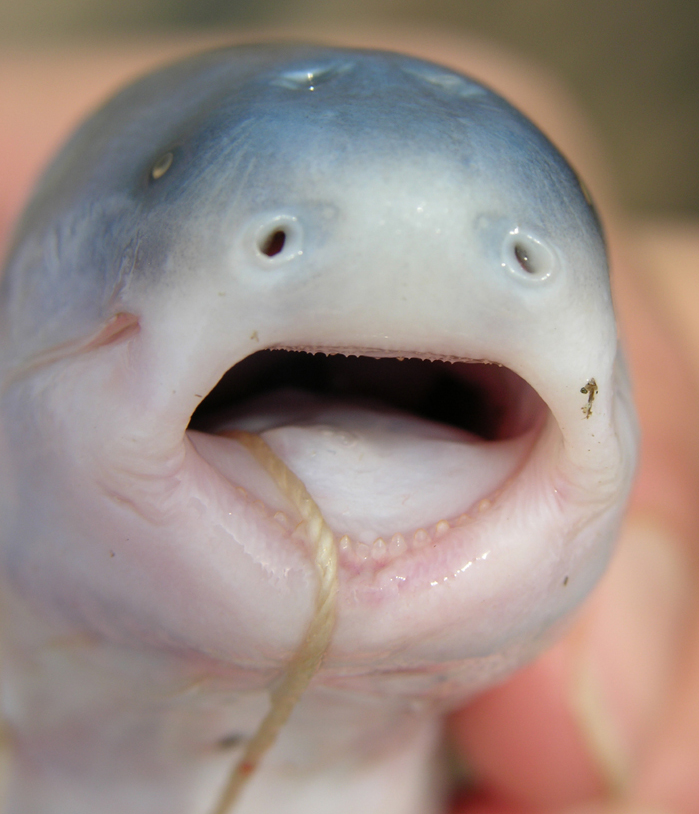
 |
|
|
|
#1 |
|
Moderator
      Join Date: Mar 2004
Posts: 7,140
|
Cetopsidae = ( set TOP sid dee )
Commonly known as "Whale Catfishes" because of the origin of the first name Cetopis, meaning "looks like a whale" There are about a dozen species in this family and they are not too popular in the hobby due to their inactivity in the aquarium. One member of this genus the "Candiru" is a voracious predator on other wounded fish in its habitat, burying into the flesh of the animal. http://www.scotcat.com/cetopfamily.htm Cetopsis coecutiens - “An open water catfish with no adipose fin or armour” http://planetcatfish.com/catelog/spe...species_id=339 http://en.wikipedia.org/wiki/Cetopsidae Distribution Cetopsids have a wide distribution. Latitudinally, cetopsines extend from northern Colombia to central Argentina. They inhabit major habitats such as the Orinoco River, Amazon River, and the Guyanas. Description In Cetopsinae, the swim bladder is highly reduced and is enclosed in a bony capsule. Cetopsines lack an adipose fin, are naked, lack bony plates on the body, have a proportionately long anal fin, and lack nasal barbels. Many species are characterized by small eyes that are obscured by a thick, overlying integument that make them appear blind. Also, their dorsal and pectoral fins usually lack spines except in Cetopsidium. In most species of cetopsines, mature males have a convex margin to their anal fin and elongated distal filaments of the dorsal and pectoral fin spines. The adipose fin may be present (though small) in Helogeneinae. The maximum length of this family is about 26 centimetres (10 in) SL in Cetopsinae. Cetopsidium are generally smaller in body size than Cetopsis. The maximum length in Helogenes species is 7 cm (3 in). Ecology Most cetopsids feed on insects. Cetopsis candiru and C. coecutiens are well known to have extremely voracious appetites. These fish will attack carrion, other living fish while in gillnets, and even people. It is erroneously believed by some people that these fish are parasitic like parasitic catfishes. |
|
|

|
|
|
#2 | |||
|
Moderator
      Join Date: Mar 2004
Posts: 7,140
|
A recent thread in AF
Catfishes featured in "The Amazon Abyss" http://www.arofanatics.com/forums/sh...d.php?t=294713
Serrated type of teeth in this pix of Cetopsis coecutiens aka blue whale cat 
|
|||
|
|

|
|||
|
|
#3 |
|
Moderator
      Join Date: Mar 2004
Posts: 7,140
|
One of my old thread - Peruvian Blue Whale Catfish - (cetopsis coecutiens)
http://www.arofanatics.com/forums/sh...d.php?t=198385 Well, Continuing my adventure with the Peruvian Blue Whale Catfish - (cetopsis coecutiens) .. I have decided to pick up a pair of Cetopsis cf. Montana  Pix of many species under Cetopsidae can be found here http://silurus.acnatsci.org/ACSI/tax...ae/index1.html Some old thread in AF Blue Whale http://www.arofanatics.com/forums/sh...highlight=blue What cat is this? Blue colouration at the top.... http://www.arofanatics.com/forums/sh...highlight=blue |
|
|

|
|
|
#4 |
|
Moderator
      Join Date: Mar 2004
Posts: 7,140
|
This species behaves quite diff as compared to Cetopsis coecutiens
1) they are not on the move all the time 2) they are active when light off. but tend to move-stop-move-stop .. kind of like hopping around. Day 1 They "test bite" some sinking pellets but spat it out  Day 2 one had started to take frozen shrimp  Few more pix  
Last edited by amiidae; 08-09-2007 at 09:06 PM. |
|
|

|
|
|
#5 |
|
Dragon
     Join Date: Aug 2005
Posts: 1,133
|
wow.. nice collection..
|
|
|

|
|
|
#6 | |
|
Guest
Posts: n/a
|
Quote:

|
|

|
|
|
#7 |
|
Dragon
     Join Date: Aug 2005
Posts: 1,133
|
hmmm... their diet is mainly on meat? possible to train on pellets?
|
|
|

|
|
|
#8 | |||
|
Moderator
      Join Date: Mar 2004
Posts: 7,140
|
Quote:
Quote:
Quote:
|
|||
|
|

|
|
|
#9 |
|
Endangered Dragon
 Join Date: Jul 2004
Posts: 10,433
|
Nice cats .. have to say that their looks doesn't represent their true nature...
|
|
|

|
|
|
#10 |
|
Moderator
      Join Date: Mar 2004
Posts: 7,140
|
Ya, they look more like a plastic light stick LOL !!!
honestly, if you observe closely, part of their flesh is actually transparent. |
|
|

|
 |
|
| Currently Active Users Viewing This Thread: 1 (0 members and 1 guests) | |
| Thread Tools | |
| Display Modes | |
|
|